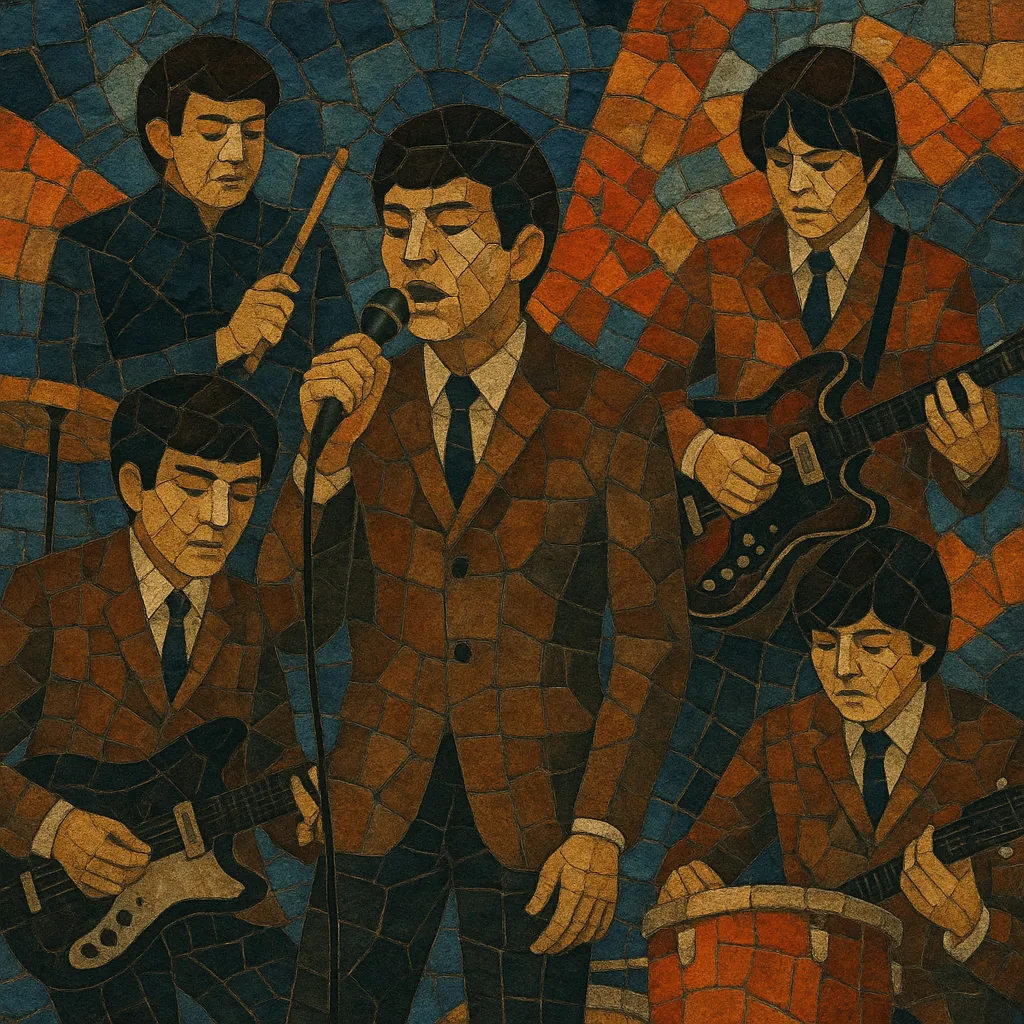Group Sounds (often abbreviated GS) is a mid-to-late 1960s Japanese pop-rock movement characterized by electric guitar “beat bands” modeled on the British Invasion and The Ventures’ surf sound, blended with domestic kayōkyoku pop sensibilities.
Bands typically featured sharp suits or coordinated costumes, catchy vocal harmonies, twangy or fuzz-laden guitars, Farfisa/Combo organs, and danceable backbeats. Repertoires mixed original tunes with Japanese-language covers of Western hits. Lyrical themes centered on teenage romance, youthful longing, and bittersweet nostalgia, making the style both energetic and tender.
The term “Group Sounds” (グループ・サウンズ) was coined by Japanese media to describe this wave of guitar groups that broke into the mainstream, popularizing the rock band format in Japan.
The foundation for Group Sounds was laid by Japan’s eleki boom, inspired by The Ventures’ tours and recordings, which popularized surf-style electric guitar. Simultaneously, the British Invasion brought beat music to Japanese youth culture. Domestic pop (kayōkyoku) provided melodic and lyrical frameworks that bands adapted for a band-based setting.
Following The Beatles’ 1966 visit to Japan, guitar groups rapidly entered the mainstream. Media and talent agencies branded the phenomenon “Group Sounds,” and labels invested in studio recordings, film tie-ins, and TV appearances. Bands like The Tigers, The Spiders, and The Tempters scored major hits, while others explored bluesy or psychedelic shades of the style. The scene’s sound blended beat-group backbeats, surf twang, fuzz tones, combo organs, and sweet vocal harmonies, often packaging bands with idol-like appeal.
By the turn of the 1970s, tastes shifted toward singer-songwriter “New Music,” heavier psych/prog, and folk rock. Many GS bands dissolved or members went solo as TV idol culture and new rock currents took the spotlight. Although the boom was brief, it had already normalized the electric guitar band in Japan’s mainstream.
Group Sounds created the template for guitar-pop bands in Japanese popular music, influencing the development of J-Pop and J-Rock band culture. Its mix of catchy melodies, visual styling, and band-centric performance informed idol-oriented pop (idol kayō) and, more broadly, the aesthetics of subsequent Japanese rock movements, up to visual kei and modern indie scenes.


